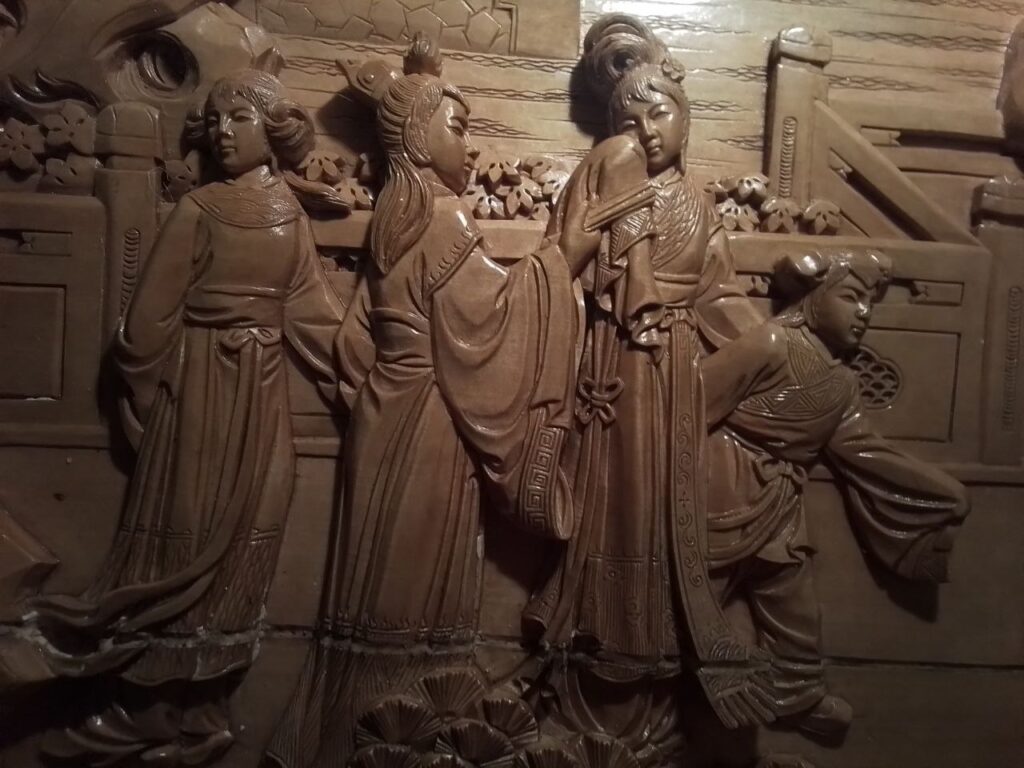THE FOUR BOOKS & THE FIVE CLASSICS

The written corpus for the Classical Education (the Epistemological Journey) in China is constituted by The Four Books and the Five Classics : Si Shu Wu Jing 四 书 五 經 Si4 Shu1 Wu3 Jing1.
THE FIVE CLASSICS are essentially the cultural legacy of the Zhou dynasty (1046 BCE to 256 BCE) :
*** 1- The Yi Jing/I Ching 易 經 :The Classic of Change
The essential, pervasive concept and image of the I Ching is the Hexagram symbolizing and synthesizing the epistemological journey (THE CHANGE, precisely) as expressed by the scholars coming from the Chinese civilization. Below is an article written by me explaining the Hexagram at the end of the piece, among other things : The Everlasting Civilization.
The Everlasting Civilization
This second article might also prove useful for understanding the Hexagram : The quantum leap of the Soul’s Journey across Chinese, Greek and Indian Cultures.
The Quantum Leap of the Soul’s Journey Across Chinese, Greek and Indian Cultures
*** 2- The Shijing 诗 經 : The Book of Songs
*** 3- The Shujing 书 經 : The Book of Documents
*** 4- The Chunqiu 春 秋 : Spring & Autumn (Philosophy : History : Ethics : Politics)
*** 5- The 3 Books on Rituals counted as one or San Li 三 礼 San1 Li3 meaning The 3 on Rituals :
a. Zhou Li 周 礼 : Rituals of the Zhou dynasty (1046 to 256 BCE)
b. Li Yi 礼 仪 : Rituals & Ceremonies
c. Li Ji 礼 记 : Records on Rituals
THE FOUR BOOKS are about general epistemology :
*** 1- The Analects. The English word ‘Analects’ is coming from the direct transliteration of the Greek word ‘Analekton’ which translates exactly the Chinese title 伦 语 Lun2 Yu3 which means ‘Selected Sayings’. It is a collection of sayings mostly by Confucius (551 to 479 BCE). It was used as a manual for the epistemological exploration not only by *pondering upon the general principles* but also, maybe first and foremost displaying *role models in specific existential situations to be discussed with the students* by the successive Scholarchs till the destruction of the Lu principality (where Confucius was born) in 249 BCE. The last Confucianist Scholars coming from the Lu principality managed to save their documents and the school went through a challenging period of uncertainty till its selection as the State doctrine in 136 BCE by Emperor Wu (156/ruled from 141 to 87 BCE) of the Han dynasty (206 BCE to 220 CE).
*** 2- The Great Learning or Daxue 大 学 Da4 Xue3 written by Zeng Shen 曾 参 Zeng1 Shen1 (505 to 435 BCE), a direct disciple of Confucius. The Great Learning is the synthetic manual on general epistemology coming from the Chinese scholars.
The Three Guidelines :
A. Making one’s bright virtue brilliant.
B. Making the people new.
C. Coming to rest in the highest Good.
The Eight Stages :
Please envision the Eight Stages in a circular configuration
A. Put order in one’s own AFFAIRS.
B. Extending UNDERSTANDING.
C. Making INTENTIONS genuine.
D. BALANCING the Mind.
E. Refining one’s PERSON.
F. Put order in one’s HOUSEHOLD.
G. Ordering the STATE.
H. Setting the WORLD at peace.
*** 3- The Doctrine of the Mean or Zhong Yong 中 庸 Zhong1 Yong1 written by Confucius’ grandson, Zi Si 子 思 Zi3 Si1 (483 to 402 BCE)
The Junzi’s tasks :
The gentleman or Junzi 君 子 Jun1 Zi3
A. Cultivate oneself or refining one’s PERSON.
B. Put order in one’s HOUSEHOLD.
C. Ordering the STATE.
D. Setting the WORLD at peace.
*** 4- The Mencius, the eponymous book on epistemology, ontology, psychology, ethics, politics, rhetorics and Universal History by Meng Zi 孟 子 Meng4 Zi3 or Master Meng known in the West under the Latinized form of his name : Mencius (372 to 289 BCE).
